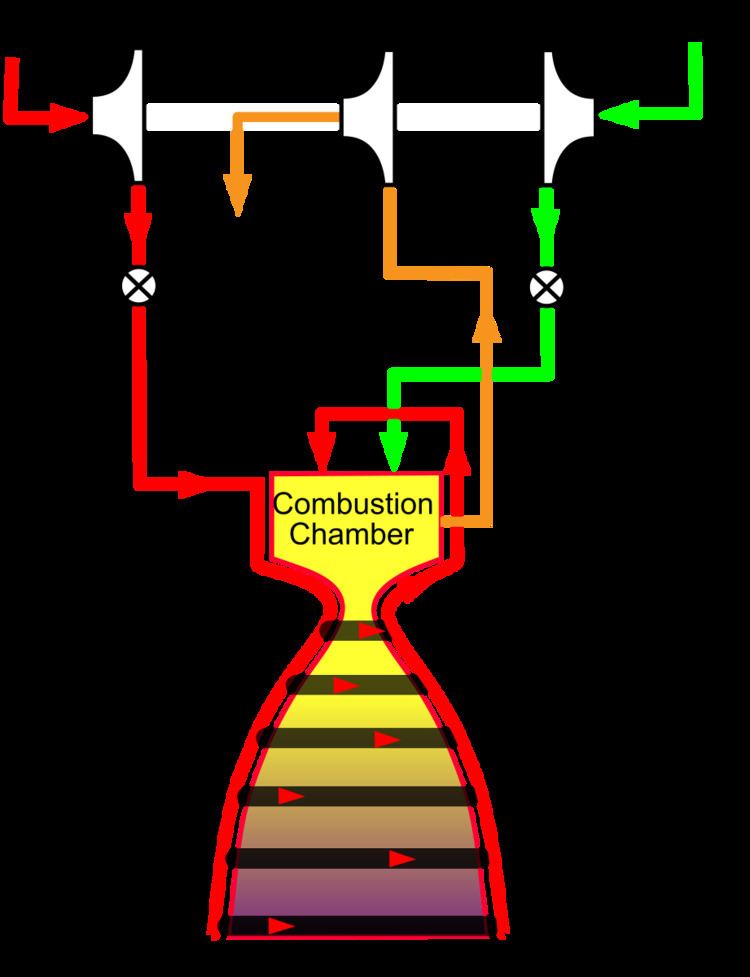 | ||
The combustion tap-off cycle is a power cycle of a bipropellant rocket engine. The cycle takes hot gases from the main combustion chamber of the rocket engine and routes them through engine turbopump turbines to pump fuel, then is exhausted. Since not all fuel flows through the main combustion chamber, the tap-off cycle is considered an open-cycle engine. The cycle is comparable to a gas-generator cycle engine with turbines driven by main combustion chamber exhaust rather than a gas-generator.
The J-2S rocket engine, a cancelled engine developed by NASA, used the combustion tap-off cycle and was successfully tested multiple times in development, starting in 1969.
Blue Origin, with their New Shepard launch vehicle, has successfully flight-tested the BE-3 engine using a tap-off cycle. According to Blue Origin, the cycle is particularly suited to human spaceflight due to its simplicity, with only one combustion chamber and a less stressful engine shutdown process. However, engine startup is more complicated, and due to its nature of feeding gases from the main combustion chamber into the turbopumps, the turbine must be built to withstand higher-than-normal temperatures.
